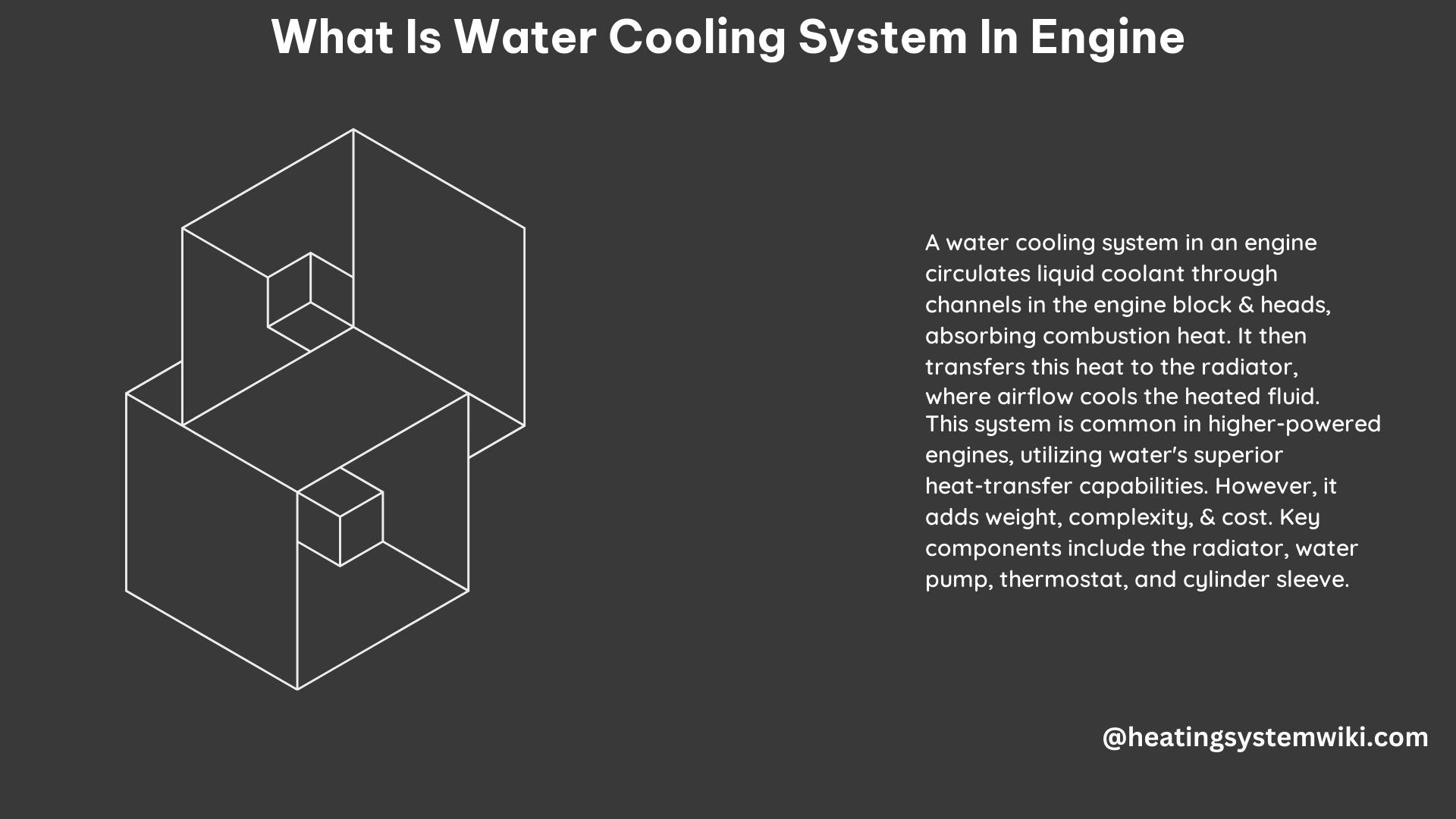The water cooling system in an engine is a complex network of components designed to regulate and manage the engine’s temperature. It plays a crucial role in ensuring the engine operates within its optimal temperature range, enhancing thermal efficiency, and preventing potential damage caused by excessive heat buildup.
Understanding the Water Cooling System
The water cooling system works by circulating a mixture of water and coolant throughout the engine and a radiator. The heart of the system is the water pump, which is driven by a belt connected to the engine’s crankshaft. The water pump circulates the coolant through the engine, where it absorbs heat from the engine’s internal components.
The heated coolant then flows towards the radiator, where air blown over its surface helps dissipate the heat, cooling the coolant before it is recirculated back into the engine. This continuous cycle of heat absorption and dissipation helps maintain the engine’s temperature within a safe and efficient range.
Key Components of the Water Cooling System

-
Water Pump: The water pump is the central component that drives the circulation of the coolant through the engine and radiator. It is typically driven by a belt connected to the engine’s crankshaft, ensuring synchronization with the engine’s operation.
-
Radiator: The radiator is responsible for dissipating the heat absorbed by the coolant. It is designed with a series of thin, closely spaced metal fins that allow for efficient heat transfer to the surrounding air. The radiator is often equipped with a fan that helps draw air through the fins, further enhancing the cooling process.
-
Thermostat: The thermostat is a crucial component that regulates the flow of coolant based on the engine’s temperature. When the engine is cold, the thermostat restricts the flow of coolant, allowing the engine to reach its optimal operating temperature quickly. As the engine warms up, the thermostat opens, allowing the coolant to circulate more freely and dissipate the excess heat.
-
Hoses and Connectors: The water cooling system relies on a network of hoses and connectors to transport the coolant between the engine, radiator, and other components. These hoses and connectors must be in good condition to prevent leaks and ensure the efficient flow of the coolant.
-
Coolant: The coolant, typically a mixture of water and antifreeze, plays a vital role in the water cooling system. The antifreeze component helps lower the freezing point of the coolant, preventing it from freezing in cold weather conditions. Additionally, the coolant contains corrosion inhibitors that protect the engine’s internal components from rust and scale buildup.
-
Expansion Tank: The expansion tank, also known as the header tank, is designed to accommodate the thermal expansion of the coolant as it heats up. This tank allows for the expansion of the coolant, preventing excessive pressure buildup within the system and potential damage to the engine components.
Thermal Efficiency and Material Selection
The water cooling system plays a significant role in enhancing the thermal efficiency of an engine. By maintaining the engine’s temperature within the optimal range, the system ensures that the engine operates at its peak efficiency, reducing fuel consumption and emissions.
The materials used in the water cooling system, such as aluminum for the radiator, are carefully selected for their heat transfer and corrosion resistance properties. These materials help ensure the longevity and efficiency of the cooling system, minimizing the risk of degradation and ensuring reliable performance over the engine’s lifetime.
Thermal Expansion and Corrosion Inhibitors
The water cooling system is designed to accommodate thermal expansion, a phenomenon where the cooling water expands as it heats up. The inclusion of a header tank or expansion tank allows for this expansion, preventing damage to the engine components due to excess pressure buildup.
Corrosion inhibitors are added to the cooling water system to protect the engine’s internal components from rust and scale accumulation. These inhibitors help keep the heat exchanging surfaces of the engine clean, ensuring optimal heat transfer and reducing the risk of engine overheating.
Maintenance and Repair
Proper maintenance of the water cooling system is crucial for the vehicle’s longevity and performance. This includes regular checks of coolant levels, inspecting hoses and connectors for leaks, keeping the radiator clean, and replacing the thermostat if it fails.
In case of malfunctions, replacing components such as the water pump, radiator, or thermostat can help restore the system’s functionality and prevent severe engine damage. It is essential to follow the manufacturer’s recommended maintenance schedule and use only high-quality replacement parts to ensure the continued efficient operation of the water cooling system.
Conclusion
The water cooling system in an engine is a complex and vital component that plays a crucial role in maintaining the engine’s optimal operating temperature. By understanding the system’s key components, their functions, and the importance of proper maintenance, vehicle owners and mechanics can ensure the longevity and performance of the engine, ultimately enhancing the overall driving experience.
